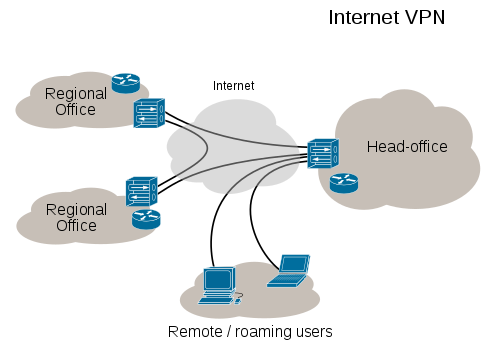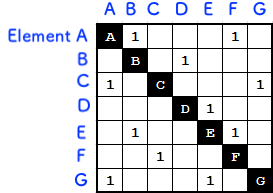
オンライン・イチバーン!!!
ON-LAINN(online) ICHI-BAN: On
online
Rhapsody

Tchikoma's
Philosophical Problems
まず、オンラインタイ プの授業の論理的分類からはじめてみましょう(表は画像でクリッ クで単独表示されます)【リンク】。
オンライン授業についてのディスカッショングループ にはFaceBookで「新 型コロナ休講で、大学教員は何をすべきかについて知恵と情報を共有するグループ」がある。その中に、三中信宏さんの投稿があった。
三中信宏が「オンライン授業千秋楽を迎えた日」2020 年前期の大学授業での、コロナ禍におけるオンライン授業についてエッセーを書いている。詳細はともかく、重要なことは次の表題で、ある程度の察しがつく。
9.オンライン授業の光と影
「……オ ンライン授業という新たな扉がいったん開かれてしまったからには,今 後はもうリアル対面授業にまた逆戻りすることはきっとできないだろう.ワタクシたちは 新しい道を見つけてしまった.授業だけではない.大小さまざまな会議やセミナーあるいは学会大会までオンラインで開催される時代がいきなり目の前に到来し ている.どのように使いこなすのかはこれからの慣れにかかっているだろう.それでも「オンライン〜」という選択肢が今後は常備されることは まちがいない. 選択肢が広がることそれ自体に異論はまったくない. 実際にオンライン授業を続けてみると,対面授業ではつねにマイナス要因だった,たとえば教室の後方からはスクリーンが見えづらいとか講師の声が聞き取れな いというような物理的空間に派生する問題は,オンライン授業では最初からきれいに解決されている.また,R 実習の細かい操作あるいはスクリプト入力は,対面授業のときに比べれば,むしろやりやすかったのではないだろうか.こう考えると,異論の余地なくオンライ ン授業に軍配が上がる点はいくつも列挙できる」三中信宏「オンライ ン授業千秋楽を迎えた日」)。僕は至言であると思う。
10.最後に — サポート体制のありがたさ
エドワード J. マロニー&ヨシュア キム『秋学期以降の15のシナリ オ:ソーシャル・ディスタンス時代における高等教育』(Edward Maloney and Joshua Kim (2020) "15 Fall Scenarios", Inside Higher Ed) については、大阪大学の人たちが翻訳し次のような、エドワード J. マロニーたちのシナリオを紹介している。もちろん、私(池田光穂)は、「15. 完全な遠隔教育モデル(Fully Remote)」の熱狂的な支持派であることは言うまでもない。
| 1. 通常への回帰モデル(Back
to Normal) |
In
this scenario, the fall semester looks like any other fall semester.
Residential students return to campus; commuting students participate
in classes on campus as usual. All co-curricular and curricular
activities pick up as usual. Life is back to normal, perhaps
(hopefully) with some lessons learned from the upheaval of the spring
about the importance of investments in teaching and learning support.
https://www.insidehighered.com/digital-learning/blogs/learning-innovation/15-fall-scenarios |
| 2. 授業開始延期モデル(A
Late Start) |
One
possibility for the fall is that colleges and universities begin the
semester later than usual, perhaps sometime in October or even early
November, whenever the social distancing restrictions can accommodate
students gathering together in classes on campus. Schools may choose to
start online and then pick up face-to-face slightly later in the
semester, or they may postpone the start of the semester until there is
a vaccine, better testing or a clear turning point in our fight against
the ongoing spread of COVID-19. - ibid. |
| 3.
来年度春学期移行モデル(Moving Fall to Spring) |
While
under the previous scenario the fall semester would start late, it
still assumes a fall semester would take place within the boundaries of
the normal fall semester. In this scenario, the fall semester would be
postponed until January 2021. From there, schools might choose to push
back the spring semester to the summer, or push through a modified
calendar to make spring and a much shorter summer session possible.
This is a drastic step, but it is one that some colleges are actively
considering as part of their fall planning. - ibid. |
| 4.
1年生限定モデル(First-Year Intensive) |
How
a student begins their college experience may be the best predictor of
how their college experience will end. The ability of a student to
persist through the rigors of college life is in part dependent on the
quality of the support they receive in orienting to the independence
and intensity of college-level work. Recognizing the importance of the
first year and the first few weeks and months of the transition to
college, this plan brings only first-year students to campus in the
fall. First-year students learn in residential classes, while also
participating in a full range of campus-based orientation and
social-connecting exercises. Sophomores, juniors and seniors continue
to learn remotely for the fall semester. - ibid. |
| 5.
大学院生限定モデル(Graduate Students Only) |
Like
the first-year intensive model, this approach would identify select
student populations for return to campus. In this model, a smaller
population of graduate students might return to campus to continue
studies and to help with research continuity. There are other ways of
identifying student populations -- by school, by major, by class --
that could also be combined with curricular and administrative
considerations such as class size and need for face-to-face
interaction. - ibid. |
| 6.
大規模ギャップイヤーモデル(Structured Gap Year) |
Many
colleges and universities have extensive study abroad and gap year
options. While study abroad will still likely be a challenge in the
fall, one approach to creating a lower-density model for the fall would
be to implement a broader-scale approach to gap year experiences.
Students could propose project-based experiences that could be
implemented and managed while social distancing rules are still in
place. This model would depend heavily on whether options for students
to make the gap year a meaningful experience are available given social
distancing restrictions. *ギャップイヤー「大学への入学資格を 保持したまま、留学、アルバイト、インターンシップ、ボランティア活動など多様な経験をするために、一定の期間、入学を遅らせられる制度」 |
| 7.
絞られたカリキュラムモデル(Targeted Curriculum) |
A
Targeted Curriculum scenario is when certain courses are designated as
high priority, are provided with institutional resources and may be
given precedence for being taught on campus. For example, courses with
high demand but capped enrollments, such as seminars, might be taught
on campus, as might courses that are essential to allow students to
fulfill graduation requirements. Similarly, experiential courses,
performance-based courses and labs might be given priority for on
campus meetings, as might courses that require intense faculty-student
feedback and discussion, such as writing courses and first-year
seminars. - Fall
Scenario #7: Targeted Curriculum ++ ターゲット・カリキュラム・シナリオとは、特定のコースが優先度の高いものとして指定され、機関内のリソースが提供され、キャンパスで教えられることが優 先される場合のことである。例えば、セミナーのように需要は高いが登録者数に上限があるコースは、キャンパスで教えられるかもしれないし、学生が卒業要件 を満たすために不可欠なコースも同様である。同様に、体験型のコース、パフォーマンスベースのコース、ラボなどは、キャンパス内での開催が優先されるかも しれないし、ライティングコースや初年度セミナーなど、教員と学生の間で激しいフィードバックやディスカッションが必要なコースも同様である。 https://www.deepl.com/ja/translator |
| 8.
分割カリキュラムモデル(Split Curriculum) |
A Split
Curriculum
has many of the advantages of a Targeted Curriculum, in that schools
can make proactive choices about which courses to offer to maximize
student success. The main difference between these two strategies is
that a Targeted Curriculum would likely result in fewer courses being
offered, as faculty are redeployed around high-demand/high-impact
courses. A Split Curriculum seeks to preserve as much of the full
catalog as possible by distributing courses across residential and
online options. -https://bit.ly/3F3ElPk スプリットカリキュラムは、学生の成功を最大化するためにどのコースを提供すべきか、学校が積極的に選択できるという点で、ターゲットカリキュラムと同様 の利点がある。この2つの戦略の主な違いは、需要が高く影響力の大きいコースに教員が再配置されるため、ターゲット・カリキュラムでは、提供されるコース が少なくなる可能性が高いことである。スプリットカリキュラムは、全寮制とオンラインにコースを分散させることで、カタログの内容をできる限り維持しよう とするものである。-https://www.deepl.com/ja/translator |
| 9. ブロック・プラン(A
Block Plan) |
One
block is three-and-a-half weeks long, or 18 days from First Mondays to
Fourth Week Wednesday. The Block Plan allows you to focus your energies
solely on what you want to do. By taking one class at a time, typically
meeting each morning from 9 a.m. until noon, your time is spent
learning deeply. One block at CC is equivalent to one semester's worth
of material at another school. The singular academic focus of the Block
Plan allows you to create flexibility in your schedule, pursuing your
own course of study as well as traditional ones, leaving ample time
each day for your passions outside of class. From volunteering, to
designing your own research project anywhere in the world, to
innovating and pitching your own Big Idea - at CC your time is just
that - yours. - https://www.coloradocollege.edu/basics/blockplan/ *** 1ブロックは3週間半で、第1月曜日から第4週目の水曜日までの18日間から構成される。ブロックプランでは、自分のやりたいことだけにエネルギーを集中 させることができる。1度に1つのクラスを受講し、通常は毎朝9時から正午までミーティングを行うことで、時間をかけて深く学ぶことができる。CCの1ブ ロックは、他校の1学期分の教材に相当します。ブロックプランでは、学業に専念するため、スケジュールに柔軟性を持たせることができ、従来のコースだけで なく、自分の好きなコースを追求することができる。ボランティア活動、世界各地での研究プロジェクトの立案、革新的なビッグアイデアの発表など、CCでは あなたの時間はまさにあなたのものなのです。https://www.deepl.com/ja/translator |
| 10.
モジュール制(Modularity) |
さて、モジュール教育について考えてみ
よう。モジュールとは、学習プロジェクトで構成された独立したユニットに基づいた教
育スタイルで
ある。モジュラー教育は「消費ベース」であり、生徒は自分の成長や学業上の必要性に応じて、本当に必要なコースやアクティビティ、プロジェクトを選択する
ことができる。一律の考え方ではなく、学生一人ひとりがユニークな個人として尊重され、自分が望むモジュールを追求する自由が与えられる。 "Let’s consider modular education, a style of instruction based on modules — independent units made up of learning projects. Modular education is ‘consumption based’, meaning students can select the courses, activities or projects that are truly needed for their personal growth and/or academic needs. There is no one-size-fits-all mindset; instead, each student is respected as a unique individual and given the freedom to pursue the modules he or she wants. "-What is Modular Education? |
| 11.
キャンパス滞在+バーチャル学習モデル(Students in Residence, Learning Virtually) |
学生がキャンパスで一緒に住んでいる
間、オンラインでコースを教えるプログラム。 Much like the model of Minerva Schools at KGI, this approach would bring students back to campus, perhaps at a slightly less dense rate, while still teaching courses in a virtual environment. Students would be able to take advantage of many co-curricular activities that were set up for effective social distancing, but classes, where the correct density of students sitting for long periods of time in a room is still a relative unknown, would be taught online. Fall Scenario #11: Students in Residence, Learning Virtually |
| 12. 低滞在時間モデル(A
Low-Residency Model) |
A
low-residency program
(or limited residency program) is a form of education, normally at the
university level, which involves some amount of distance education and
brief on-campus or specific-site residencies—residencies may be one
weekend or several weeks. These programs are most frequently offered by
colleges and universities that also teach standard full-time courses on
campus. There are numerous Master's degree programs in a wide range of
content areas; one of the most popular limited residency degree
programs is the Master of Fine Arts in creative writing. The first such
program was developed by Evalyn Bates and launched in 1963 at Goddard
College in Plainfield, Vermont.[1] 「ローレジデンシープログラム(またはリミテッドレジデンシープログラム)とは、通常、大学レベルの教育の一形態であり、ある程度の遠隔教育と、キャンパ スまたは特定の場所での短期間の滞在を伴うものである。これらのプログラムは、キャンパスで標準的なフルタイムのコースを教えているカレッジや大学が最も 頻繁に提供している。修士号プログラムは、さまざまな内容のものがあるが、滞在期間が限られた最も人気のあるプログラムのひとつが、クリエイティブ・ライ ティングの修士号プログラムである。このようなプログラムは、Evalyn Batesによって開発され、1963年にバーモント州プレーンフィールドのGoddard Collegeで開始された」。https://www.deepl.com/ja/translator による) |
| 13. ハイフレックス・モデル(A
HyFlex Model) |
What is HyFlex?
How does it work? What are some strategies for getting started? This
guide helps instructors answer these questions by providing an overview
and practical strategies for setting up HyFlex activities. The HyFlex model is perhaps the most flexible and for many will be the most attractive. It is also possibly one of the more difficult approaches for faculty. In this model, courses would be taught both face-to-face and online by the same instructor at the same time. Students could choose to return to campus or stay home. Those on campus could be assigned certain class slots when face-to-face is an option, allowing the schools greater control of social distancing in the classroom. This model tends to privilege synchronous learning, and to do it well often requires real-time in-class help (a TA or course assistant to manage the online students), an intentionally designed classroom and a great deal of patience from both the students and faculty. |
| 14.
修正版チュートリアル・モデル(A Modified Tutorial Model) |
This
approach leans heavily on students as partners in the fall. In some
versions of the tutorial approach, students might take a common lecture
and then meet with the faculty member or teaching assistant in small
recitations. In others, they might only meet one on one or in very
small groups to do the work of the course. In a Modified Tutorial
Model, the common lecture could be delivered online, and the small
meetings could be structured to follow social distancing requirements.
The goal of any tutorial model, modified or otherwise, is to develop
deep, meaningful and perhaps even personalized learning experiences. Fall Scenario #14: A Modified Tutorial Model |
| 15.
完全な遠隔教育モデル(Fully Remote) |
"Perhaps the most
obvious option for the fall is to continue doing what we’ve been doing
this spring. Students would be taught
in a virtual environment from wherever they happen to be.
Successes from this spring could be carried over to the fall, and
lessons learned could be employed. Co-curricular activities would be a
challenge, but student groups and many activities could be carried
forward online, if only temporarily." |
てな、ことを言っている間に、東大の情報理工学系研 究科が『オンライン・ファースト』東京大学出版会、2020年(ISBN978-4-13-063457-1) というナイスな本を上梓した。
| はじめに――新型コロナウイルスに立ち向かうための情報理工学(須田礼
仁) 第I部 これからの社会とIT 1 超スマート社会の進め方――Society5.0とは(坂井修一)
2 大人のための情報教育――「もとに戻さない」,真のオンライン社会へ(萩谷昌己) 3 インターネットのしくみでつくる社会――つながりによる革新(江﨑 浩) 第II部 ITでデザインするポストコロナ社会 4 ソーシャルディスタンシングと感染爆発の検知――データサイエンスの
活用(山西健司)
5 触れずに触り,遠隔で操作する――VRとシステム情報学(藤田政之・稲見昌彦・川嶋健嗣・篠田裕之・津村幸治) 6 感染症とデータビジネスと民主主義――個人と社会のデータ管理(橋田浩一) 7 オンライン講義・テレワークを支えるシステム──データ活用が導くサイバーフィジカルアーキテクチャ(中村 宏・関谷 勇司) 8 サイバー空間と実世界を結ぶ──ポストコロナを支えるAI,VR,ロボット(稲葉雅幸・岡田 慧・深尾隆則・國吉康夫・葛岡英明・鳴海拓志・雨宮智 浩・青山一真・相澤清晴・竹内昌治) ポストコロナの新たな情報化社会へ向けての提言(情報理工学系研究科) 最新IT用語集 |
| XAI |
Explainable AI,
eXplainable AI |
Explainable
AI—especially explainable machine learning—will be essential if future
warfighters are to understand, appropriately trust, and effectively
manage an emerging generation of artificially intelligent machine
partners -Explainable
Artificial Intelligence (XAI), by Dr. Matt Turek |
| VPN |
irtual private
network |
 A virtual
private network (VPN) extends a private network across a public
network and enables users to send and receive data across shared or
public networks as if their computing devices were directly connected
to the private network.[1] The benefits of a VPN include increases in
functionality, security, and management of the private network. It
provides access to resources inaccessible on the public network and is
typically used for telecommuting workers. Encryption is common,
although not an inherent part of a VPN connection.[2] A virtual
private network (VPN) extends a private network across a public
network and enables users to send and receive data across shared or
public networks as if their computing devices were directly connected
to the private network.[1] The benefits of a VPN include increases in
functionality, security, and management of the private network. It
provides access to resources inaccessible on the public network and is
typically used for telecommuting workers. Encryption is common,
although not an inherent part of a VPN connection.[2] |
| VM |
virtual machine
(VM) |
In computing, a virtual machine
(VM) is the virtualization/emulation of a computer system. Virtual
machines are based on computer architectures and provide functionality
of a physical computer. Their implementations may involve specialized
hardware, software, or a combination. |
| The
SIR model |
S: The number of
susceptible individuals.; I: The number of infectious individuals. ; R
for the number of removed (and immune) or deceased individuals. |
The
SIR
model[6][7][8][9] is one of the simplest compartmental models, and
many
models are derivatives of this basic form. The model consists of three
compartments:-S: The number of susceptible individuals. When a
susceptible and an infectious individual come into "infectious
contact", the susceptible individual contracts the disease and
transitions to the infectious compartment.
I: The number of infectious individuals. These are individuals who have
been infected and are capable of infecting susceptible individuals.
R for the number of removed (and immune) or deceased individuals. These
are individuals who have been infected and have either recovered from
the disease and entered the removed compartment, or died. It is assumed
that the number of deaths is negligible with respect to the total
population. This compartment may also be called "recovered" or
"resistant". |
| SD |
Structure Design |
Design
structure matrix, The design structure matrix (DSM; also referred
to as dependency structure matrix, dependency structure method,
dependency source matrix, problem solving matrix (PSM), incidence
matrix, N2 matrix, interaction matrix, dependency map or design
precedence matrix) is a simple, compact and visual representation of a
system or project in the form of a square matrix.[1] |
| PLR |
personal life
repository |
パーソナルデータストア(PDS) |
| LMS |
Learning Management Sysrtem |
|
| IoF |
Internet of Funcions |
日本の計算科学者だけが使う �ジャーゴンの可
能性あり �ジャーゴンの可
能性あり |
| ID |
Identity document |
An identity
document (also called a piece of identification or ID, or
colloquially as papers) is any document that may be used to prove a
person's identity. If issued in a small, standard credit card size
form, it is usually called an identity card (IC, ID card, citizen
card),[a] or passport card.[b] Some countries issue formal identity
documents, as national identification cards which may be compulsory or
non-compulsory, while others may require identity verification using
regional identification or informal documents. When the identity
document incorporates a person's photograph, it may be called photo
ID.[1] |
| GIGAスクール |
文科省の プロジェクト プロジェクト |
子供たち一人ひとりに個別最適化され、創造性を育む教育ICT環境の実
現に向けて、令和時代のスタンダードとしての1人1台端末環境を謳うプロジェクト.ただしもう「賞味期限」が
過ぎた可能性がある. |
| GAFA |
「GAFAの一角を占めるFacebookが社名を「Meta」に変更
したことで、「GAFAをGAMAに変えよう」とSNSでは大喜利が始まってい」るそうです。GAFAの略語を使うのは馬鹿な日本人だけ. |
|
| Baidu |
Baidu, Inc. (Chinese:
百度; pinyin: Bǎidù, meaning "hundred times", anglicized /ˈbaɪduː/
BY-doo) is a Chinese multinational technology company specializing in
Internet-related services and products and artificial intelligence
(AI), headquartered in Beijing's Haidian District.[3] It is one of the
largest AI and Internet companies in the world. The holding company of
the group is incorporated in the Cayman Islands.[2] Baidu was
incorporated in January 2000 by Robin Li and Eric Xu. The Baidu search
engine is currently the sixth largest website in the Alexa Internet
rankings.[4][5] Baidu has origins in RankDex, an earlier search engine
developed by Robin Li in 1996, before he founded Baidu in 2000.[6] 百度(バイドゥ、拼音: Bǎidù)は、 中華人民共和国で最大の検索エンジンを提供する会社である。創業は2000年1月。本社は北京市にあり、百度百科や百度入力方法なども提供している。 全世界の検索エンジン市場において、Googleに次いで第2位(米comScore社、2009年8月調べ)、中国大陸ではGoogleなどは利用でき ず、百度が最大のシェアを占める。中国発の会社であり、また中国を主要市場としているため、「中国のGoogle」と呼ばれることもある[1]。 2020年12月13日現在のアレクサランキングでの順位は、世界4位、中国国内2位である。[2] |
|
| Alibaba Group |
Alibaba Group
Holding Limited, also known as Alibaba Group and Alibaba.com, is a
Chinese multinational technology company specializing in e-commerce,
retail, Internet, and technology. Founded on 28 June 1999[1] in
Hangzhou, Zhejiang, the company provides consumer-to-consumer (C2C),
business-to-consumer (B2C), and business-to-business (B2B) sales
services via web portals, as well as electronic payment services,
shopping search engines and cloud computing services. It owns and
operates a diverse portfolio of companies around the world in numerous
business sectors.[6] アリババグループ(簡体字中国語: 阿里巴巴集团、英語: Alibaba Group Holding Limited)は、中華人民共和国の情報技術 (IT) などを行う会社であり、持株会社。本社は浙江省杭州市。 1999年の創立以来、企業間電子商取引(B2B)のオンライン・マーケット (www.alibaba.com、china.alibaba.com、www.alibaba.co.jp)を運営しており、240あまりの国家・地 域にて5340万以上の会員のほか、5つの子会社を保有している。 日本ではアリババグループ、もしくはアリババとして報道されることが多い。 |
|
| Tencent |
テ
ンセント(簡体字中国語: 腾讯、繁体字中国語: 騰訊、英語:
Tencent、拼音:
Téngxùn)は、中華人民共和国広東省深圳市に本拠を置く、付加価値サービスとオンライン広告サービスを提供する投資持株会社。インターネット関連の
子会社を通してソーシャル・ネットワーキング・サービス、インスタントメッセンジャー、Webホスティングサービスなどを提供している。活動拠点は中国に
あるが、アリババグループなどと同じく、租税回避と当局の監査を経ずに国外の証券取引所への上場するため、登記上の本社はケイマン諸島にある[1]
[3]。また、株式の大半はプロサスやヴァンガード、ブラックロックなどの外国の投資家が保有しており[4]、その実態は多国籍企業に近い。そのため近年
当局からの締め付けが強まっている。 Tencent Holdings Ltd., also known as Tencent, is a Chinese multinational technology conglomerate holding company. Founded in 1998, its subsidiaries globally market various Internet-related services and products, including in entertainment, artificial intelligence, and other technology.[4] Its twin-skyscraper headquarters, Tencent Seafront Towers (also known as Tencent Binhai Mansion) are based in the Nanshan District of Shenzhen.[5] |
|
| AI effect |
 The AI effect
occurs when onlookers discount the behavior of an artificial
intelligence program by arguing that it is not real intelligence.Author
Pamela McCorduck writes: "It's part of the history of the field of
artificial intelligence that every time somebody figured out how to
make a computer do something—play good checkers, solve simple but
relatively informal problems—there was a chorus of critics to say,
'that's not thinking'." Researcher Rodney Brooks complains: "Every time
we figure out a piece of it, it stops being magical; we say, 'Oh,
that's just a computation.'" The AI effect
occurs when onlookers discount the behavior of an artificial
intelligence program by arguing that it is not real intelligence.Author
Pamela McCorduck writes: "It's part of the history of the field of
artificial intelligence that every time somebody figured out how to
make a computer do something—play good checkers, solve simple but
relatively informal problems—there was a chorus of critics to say,
'that's not thinking'." Researcher Rodney Brooks complains: "Every time
we figure out a piece of it, it stops being magical; we say, 'Oh,
that's just a computation.'"人工知能(AI effect)効果とは、それを見る人が人工知能プログラムの行動を「本物の知能ではない」と主張して割り引くことである。作家のパメラ・マコーダックは 次のように書いている;「人工知能分野の歴史の一部であるが、誰かがコンピュータに何かをさせる方法を見つけ出すたびに『それ(=コンピュータ)は思考し ていない』という批判の声を上げていた」。 コンピュータ研究者のロドニー・ブルックスは次のように言う;「私たちがその一部を解明するたびに、それは魔法(まじない)であることをやめる」と。 |
|
| DRC |
DARPA
Robotics Challenge (DRC) |
 The
DARPA
Robotics Challenge (DRC) was
a prize competition funded by the US Defense Advanced Research Projects
Agency. Held from 2012 to 2015, it aimed to develop semi-autonomous
ground robots that could do "complex tasks in dangerous, degraded,
human-engineered environments."[1] The DRC followed the DARPA Grand
Challenge and DARPA Urban Challenge. It began in October 2012 and was
to run for about 33 months with three competitions: a Virtual Robotics
Challenge (VRC) that took place in June 2013; and two live hardware
challenges, the DRC Trials in December 2013 and the DRC Finals in June
2015.[2] [3] Besides spurring development of semi-autonomous robots,
the DRC also sought to make robotic software and systems development
more accessible beyond the end of the program. To that end, the DRC
funded the adaptation of the GAZEBO robot simulator by the Open Source
Robotics Foundation (OSRF) for DRC purposes and the construction of six
Boston Dynamics ATLAS robots that were given to the teams that
performed best in the VRC.[4] The
DARPA
Robotics Challenge (DRC) was
a prize competition funded by the US Defense Advanced Research Projects
Agency. Held from 2012 to 2015, it aimed to develop semi-autonomous
ground robots that could do "complex tasks in dangerous, degraded,
human-engineered environments."[1] The DRC followed the DARPA Grand
Challenge and DARPA Urban Challenge. It began in October 2012 and was
to run for about 33 months with three competitions: a Virtual Robotics
Challenge (VRC) that took place in June 2013; and two live hardware
challenges, the DRC Trials in December 2013 and the DRC Finals in June
2015.[2] [3] Besides spurring development of semi-autonomous robots,
the DRC also sought to make robotic software and systems development
more accessible beyond the end of the program. To that end, the DRC
funded the adaptation of the GAZEBO robot simulator by the Open Source
Robotics Foundation (OSRF) for DRC purposes and the construction of six
Boston Dynamics ATLAS robots that were given to the teams that
performed best in the VRC.[4] |
| Chatbot |
A chatbot
or chatterbot is a software application used to conduct an on-line chat
conversation via text or text-to-speech, in lieu of providing direct
contact with a live human agent.[1] Designed to convincingly simulate
the way a human would behave as a conversational partner, chatbot
systems typically require continuous tuning and testing, and many in
production remain unable to adequately converse, while none of them can
pass the standard Turing test.[2] The term "ChatterBot" was originally
coined by Michael Mauldin (creator of the first Verbot) in 1994 to
describe these conversational programs.[3]Chatbots are used in dialog
systems for various purposes including customer service, request
routing, or information gathering. While some chatbot applications use
extensive word-classification processes, natural language processors,
and sophisticated AI, others simply scan for general keywords and
generate responses using common phrases obtained from an associated
library or database.Most chatbots are accessed on-line via website
popups or through virtual assistants. They can be classified into usage
categories that include: commerce (e-commerce via chat), education,
entertainment, finance, health, news, and productivity.[4] |
|
| Unmanned aerial vehicle |
unmanned aerial vehicle (UAV) |
An unmanned aerial vehicle (UAV),
commonly known as a drone, is an aircraft without any human pilot, crew
or passengers on board. UAVs are a component of an unmanned aircraft
system (UAS), which include additionally a ground-based controller and
a system of communications with the UAV.[1] The flight of UAVs may
operate under remote control by a human operator, as remotely-piloted
aircraft (RPA), or with various degrees of autonomy, such as autopilot
assistance, up to fully autonomous aircraft that have no provision for
human intervention.[2] |
+++
Links
リンク
文献
その他の情報




++
Copyleft,
CC, Mitzub'ixi Quq Chi'j, 1996-2099